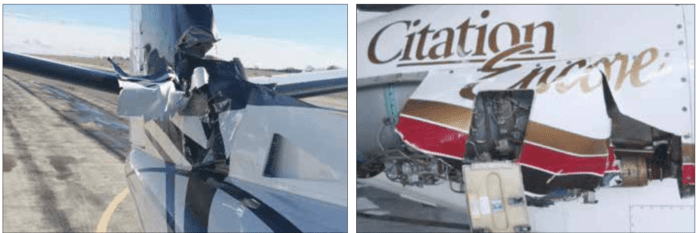Most pilots are familiar what the industry calls “quarter-turn” fasteners, those quick-release devices used to secure engine cowlings and fairings on aircraft of all sizes and uses. They typically go by their manufacturer’s name, like Camloc or Dzus. They sometimes require a special tool and they can be difficult to adjust to ensure their security. When they work, they work well.
The problem, according to the FAA, is when they don’t work. The agency in April issued a special airworthiness information bulletin (SAIB AIR-22-10) on engine cowlings, subtitled “Quarter-Turn Fastener Maintenance Instructions.” The SAIB’s release was occasioned by several instances of what the FAA calls “engine cowl damage and resulting separations” occurring across the Textron turbofan-powered airplane product line, e.g., Cessna Citations.
The thing is that departure of an engine cowling often wreaks additional damage on the airframe, and can be catastrophic. And just because Textron jets are getting special attention, that doesn’t mean your flivver or mine doesn’t have worn fasteners or other wear and tear possibly leading to a cowling departure. The SAIB “is intended to advise of the safety hazards and potential dangers of inadequate and infrequent pre-flight inspections of the quarter-turn fasteners used to attach engine cowling system components, and of the need for routine preventive maintenance,” the FAA said.
According to the SAIB, Textron, the NTSB and the FAA determined these quarter-turn fasteners are frequently repaired or replaced during the service life of the airplane and that “replacement quarter-turn fasteners often do not conform to type design or an approved repair. These nonconformities commonly include substitution of alternate parts or combinations of different manufacture types, installation of quarter-turn studs of inappropriate grip-length, and stud replacement without commensurate receptacle replacement. It is also common for cowl doors to have cracks that extend to or from a quarter-turn fastener location.”
FAA CHANGING EVTOL CERTIFICATION PLANS
In a potential setback for EVTOL aircraft developers like Joby Aviation and others who expected certification of their electric urban mobility vehicles under FAR Part 23’s small airplane rules, the FAA is planning to use a different set of standards. This “special class,” according to an FAA statement to The Air Current’s Jon Ostrower and Elan Head, “is designed to address the many novel features of unique aircraft such as these emerging powered-lift designs.”
The change is necessary, according to the FAA’s statement, because existing regulations don’t “anticipate the need to train pilots to…take off in helicopter mode, transition into airplane mode for flying, and then transition back to helicopter mode for landing.” It’s too soon to know the impact on developers.




